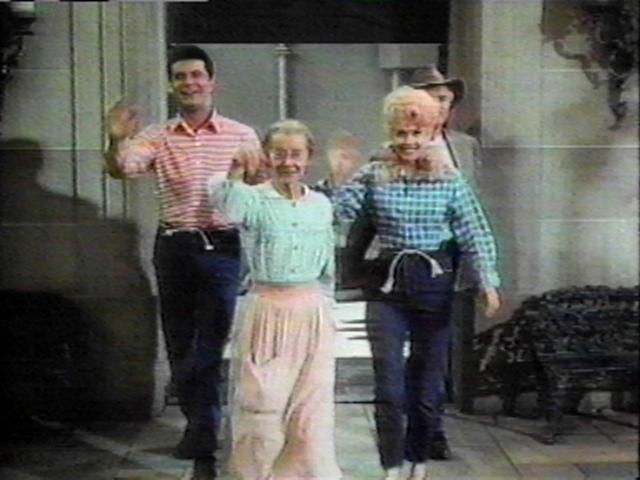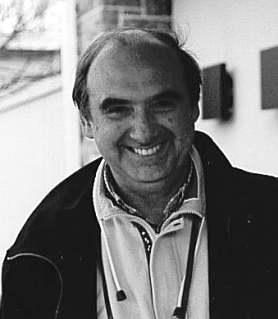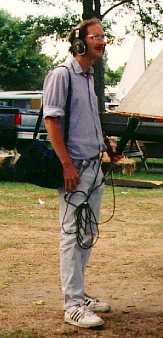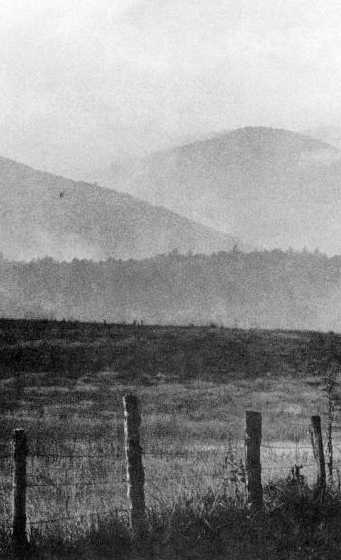
I
like livin' in the country bein' free,
Like the mountains that God meant to be.
You can't put them back in place,
If they were misplaced,
I like livin' in the country bein' free.
Documenting Hillbilly Heaven
A
report on an interview conducted in Harlan County, Kentucky
Presented
by Beth Williams....Hanszen 320...Due Wednesday, September
12th
I
will begin by briefly explaining the purpose of this web page. First off,
we were given documents to read and "documentaries" to listen to
on the web. These web radio documents, a source of new media, are commented
on in the following paragraphs. Chapter One of Portelli's "I Can Almost
See the Lights of Home-A Field Trip to Harlan County, Kentucky" is the
section I have chosen to focus on. i will comeent on this portion of the radio
documentary as well as compare it to the assigned readings for the class period.
HILLBILLY
HEAVEN
The
decision to entitle my web page "Hillbilly Heaven" came to me quickly
after I began listening to the documentary. I found the slight slang and intonation
of the interviewees to be "hillbillyish" and once they refer to
themselves as hillbilly's I knew I had a winning title. I also chose to use
the metaphore of their "hillbillyness" being heavenly becuase their
way of life seems so simple and pure.




Portelli seemed
to be himself a hillbilly. His intreague alone in Harlan County alone qualifies
him as such. His love and appreciation for good, wholesome music shines through
in his ability to pick quality music that is fitting for the mood of the documentary.
His music allows for the listener to get in the mood of the plot. I found
myself feeling a bit "hillbillyish" after listening to the first
strums of "one two three oclock" and so on. The saw mill in the
background also got me in the mood. The introduction in Chapter One really
got me interested in the subculture of Southerners I was preparing to learn
about.
The reading assigment
entitled, "How to Make Radio that's Good," says, "The story
needs one character that you identify with, who interacts,,,." I feel
as though I am unable to interact with or identify with one character, but
I am able to relate to the entire lifestyle of easy country livin. All of
us would like to destress in one way or another. This radio documentary just
gives any viewer a glimpse of what destressing is all about!
"How to
Make Radio that's Good" also mentions that you need to tell what happens
in sequencial order and then summerize the order of events for the listener
and then repeat this process over and over. The reading gives the example
of the Bible as being a good source. Though the Bible is not specifically
designed to be heard via web documentary, it fallows the format of a definition,
moral, or point and then it proceeds to tell the listener what it all means.
Similarily, I believe Portelli edits his audio in a way that describes stories,
or makes small points that can be digested singularly without confusion. This
way the listener will not have to retain too much information before moving
onto the next point. I also will add that the organization of the first chapter
alone is exceptional. The chapter is given three unique movements in which
Portelli explains three totally different aspects of the characters.
Background music
wasn't the only noice to add to the flavor (hillbillyness) of the entire project.
The audience chatter, windshield wipers, and characters talking over one another
all added to my experience. I especially liked the part in the end where the
woman talks to her cat asking if he wants to talk into the microphone. I find
this blurb adds greatly to the humanism of the piece. It shows the personality
of the woman and her interactions with other things/people besides the interviewer.
If, perhaps, her style when being interviewed was shy or coy, this little
addition shows that she is someone of great character and humor.





Portelli successfully
teams with friend and coworker Charles Hardy III to creat a masterpiece. While
Portelli seemed to act as the content brains behind the project, Hardy seemed
to bring out the flavor of the project. In this picture alone, Hardy is sseen
as the man with the recorder. He is depicted to be the brains behind the operation.
Though he extensively praises Portelli, I believe he does not give himself
enough credit in his reflection entitled, "On the Making of an Essay-In-Sound/."
I was very interested
to read about how the men first got interested in such a project and the techniques
they used to transfer their collected material. Their organization stratigies
were much like that of the workers at the radio station in "How to Make
Radio that's Good." Both parties used print as a means for organizing
material. The "radio" article says recording your few favorite parts
is essential. They say to used short hand (persay) in documenting what you
want to use on a script. The article also talks about how to balance on the
line of informative, humerous, and dramatic. They believe that if it is done
correctly, a presentation can have all three. I was once told that a comeplete
day is one where you laugh and cry....Well, if a radio documentary is
acceptional, I believe it can do both in a matter of minutes!
Finally, in Chapter
One of the interview, the men used segments of their "audio footage"
that seemed quite interconnected. For example, the interviewer would ask one
leading question and follow with a few more subsequent questions. His questions
were broad, but relivant and they seemed to be just the perfect question to
solicit a non-bias answer. His questions were leading in that they were prying
deeper into a topic rather than attempting to recieve a particular response
by the interviewee. In the "radio" reading, the people at the station
ran into the probliem of how to spice up a "do-gooder" story involving
a blind women. The station workers wanted to mix each of the elements I mentioned
earlier (drama, humor, and information, but they were unsure the public wanted
to even hear another do-gooder story. They found themselves attempting to
spice up the story too much, possibly creating a bias. Therefore, the level
of this bias (that our class is so well aware of) occurs with or without the
knowledge of the person conducting the interview or splicing the piece together.
 An Image such as this can
only be see in the vast fields of Kentucky's finest lands. I believe Portelli
and Hardy did a wonderful job of giving the view a well-rounded way of life.
They gave me a way of life that was simple, yet filled with hardships. They
showed me aspects of life such as sorrows and laughter. They gave me a
complete day....
An Image such as this can
only be see in the vast fields of Kentucky's finest lands. I believe Portelli
and Hardy did a wonderful job of giving the view a well-rounded way of life.
They gave me a way of life that was simple, yet filled with hardships. They
showed me aspects of life such as sorrows and laughter. They gave me a
complete day....
Created and maintained by Beth Williams (see below)



 An Image such as this can
only be see in the vast fields of Kentucky's finest lands. I believe Portelli
and Hardy did a wonderful job of giving the view a well-rounded way of life.
They gave me a way of life that was simple, yet filled with hardships. They
showed me aspects of life such as sorrows and laughter. They gave me a
complete day....
An Image such as this can
only be see in the vast fields of Kentucky's finest lands. I believe Portelli
and Hardy did a wonderful job of giving the view a well-rounded way of life.
They gave me a way of life that was simple, yet filled with hardships. They
showed me aspects of life such as sorrows and laughter. They gave me a
complete day....